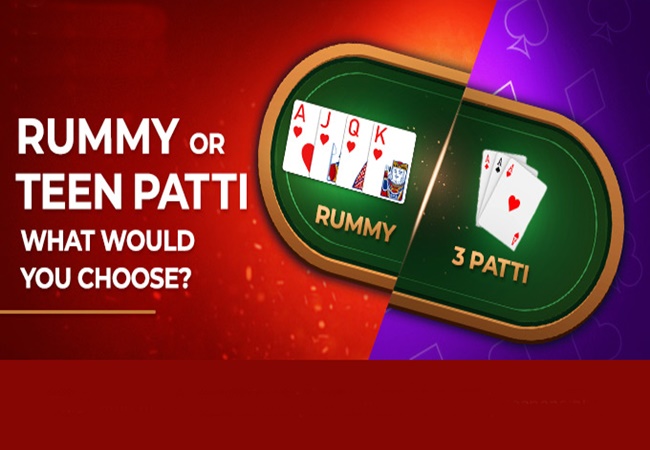Understanding the Similarities and Differences Between Teen Patti and Rummy
Teen Patti and Rummy game are two popular card games that have roots in India and are widely enjoyed across various age groups. While both games involve cards and require skill and strategy, they differ significantly in terms of rules, gameplay dynamics, and cultural significance.

Similarities
- Card-based Games: Both Teen Patti and Rummy are played using a standard deck of 52 cards. They involve creating combinations or sets of cards to win rounds.
- Skill and Strategy: Success in both games relies on strategic thinking, understanding probabilities, and making calculated moves based on the cards dealt.
- Popular in India: Teen Patti and Rummy games have a strong presence in Indian culture and are often played during social gatherings, festivals, and family events.
- Multiplayer Format: They are typically played with multiple players, adding a social and competitive element to the gameplay.
- Variants: Over time, various regional and modern variants of both Teen Patti and Rummy have emerged, offering players different ways to enjoy these games.
Differences of Teen Patti and Rummy
- Gameplay Objective
- Teen Patti: Involves betting rounds where players aim to have the best three-card hand. The game emphasizes betting and bluffing skills.
- Rummy: Involves forming sets (sequences and/or groups) of cards from the hand dealt. The objective is to be the first to meld all cards into valid combinations.
- Number of Cards
- Teen Patti: Played with three cards per player, focusing on the combinations and ranks of those three cards.
- Rummy: Typically played with 10 cards per player (depending on the variant), where players draw and discard cards to form sequences and sets.
- Betting vs Melding
- Teen Patti: Central to the game is the concept of betting, where players bet based on their perceived strength of their hand or their ability to bluff opponents into folding.
- Rummy: While some variants may involve betting, the primary focus is on melding cards into valid combinations to declare and win rounds.
- Cultural Significance
- Teen Patti: Often associated with social gatherings, festivals like Diwali, and portrayed in Bollywood movies as a game of wit and strategy.
- Rummy: Also popular in social settings but is widely played online as well, with competitive tournaments and cash games being prevalent.
- Strategy Emphasis
- Teen Patti: Requires strong bluffing skills and the ability to read opponents to succeed, along with knowing when to bet aggressively or fold.
- Rummy: Involves strategic card management, calculating probabilities, and making decisions based on the cards in hand and those discarded by opponents.
- Variants and Adaptations
- Teen Patti: Has variations like Muflis, AK47, and more, each altering rules and strategies significantly.
- Rummy: Has variants like Indian Rummy, Gin Rummy, and others, each with its own unique rules and gameplay dynamics.

Conclusion
In conclusion, while Teen Patti and Rummy share similarities such as their card-based nature, strategic depth, and popularity in Indian culture, they offer distinct gaming experiences due to differences in rules, objectives, and gameplay mechanics. Whether played for leisure among friends or competitively in tournaments, both games continue to captivate players with their blend of skill, strategy, and social interaction, contributing to their enduring appeal in the world of card games. Understanding these similarities and differences enriches the appreciation and enjoyment of both Teen Patti and Rummy, showcasing the diversity and richness of traditional games that have stood the test of time.








